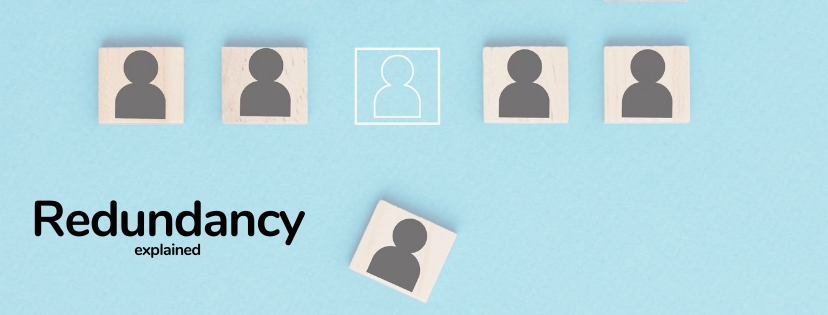Your Rights to Redundancy If Company Goes Bust: UK Employee Protections
Your Rights to Redundancy If Company Goes Bust: UK Employee Protections
Blog Article
Checking Out the Interaction In Between Business Redundancy and Organizational Flexibility for Future Growth
In the dynamic landscape these days's service world, the intricate relationship between company redundancy and organizational adaptability arises as an essential variable for continual development and success. Business typically deal with the obstacle of striking a delicate equilibrium in between keeping a degree of redundancy to alleviate risks and fostering flexibility to respond swiftly to the ever-evolving market needs. This fragile interaction holds the key to not just surviving in unstable times however likewise thriving in the face of uncertainty. As we explore the diverse measurements of this interplay, interesting insights into exactly how organizations browse these complexities to lead the way for future development wait for.
Value of Firm Redundancy
Firm redundancy is an essential component that boosts organizational strength and alleviates operational dangers. By integrating redundancy actions within the organizational structure, companies can much better endure unexpected disruptions and changes in the company setting. Redundancy functions as a critical barrier, allowing business to adjust and react properly to unexpected challenges without jeopardizing essential operations.
One secret element of the value of company redundancy is its duty in making certain connection throughout times of crisis. When faced with unexpected changes or emergencies, redundant systems, resources, or workers can action in to preserve important features and protect against prevalent interruptions. This continuity not just safeguards the firm's online reputation and customer trust fund however additionally reduces monetary losses and functional downtime.

Strategies for Business Versatility

One more vital strategy is purchasing innovation and framework that can sustain adaptability and scalability. Carrying out electronic devices, automation, and information analytics can streamline procedures, boost performance, and provide valuable insights for educated decision-making. Furthermore, producing adaptable organizational frameworks that permit quick modifications to market characteristics and consumer demands is important Click Here for staying affordable in a quickly progressing setting. By proactively determining possible disruptions and opportunities, companies can proactively adjust and flourish in an ever-changing service landscape.
Balancing Redundancy and Flexibility
Achieving an unified equilibrium in between operational redundancy and business adaptability is extremely important in browsing the complexities of a dynamic service setting. Redundancy within a company gives a safeguard, making sure continuity and stability in operations. Nevertheless, an unwanted of redundancy can lead to ineffectiveness and hinder adaptability to changing market conditions. On the other hand, business flexibility enables companies to respond without delay to exterior interruptions and seize new opportunities. Striking the ideal balance in between redundancy and adaptability is a delicate procedure that calls for a deep understanding of the organization's objectives, industry characteristics, and danger tolerance.
To accomplish this equilibrium, firms need to carry out normal assessments of their procedures to determine locations where redundancy is essential for danger reduction and where flexibility can drive technology and development. Executing flexible structures, cultivating a society of constant knowing and enhancement, and urging open interaction across all degrees of the company are essential methods to harmonize redundancy and flexibility properly. By aligning these two important elements, business can place themselves for sustainable growth and success in an ever-changing company landscape.
Study on Adaptation Success
In examining instances of successful organizational adjustment, it ends up being noticeable that the interaction in between functional redundancy and flexibility is a specifying factor in forming durable companies. A DVD rental solution, Netflix showed remarkable flexibility by transitioning right into a streaming system when digitalization interfered with the sector. These case research studies emphasize the value of functional redundancy paired with business adaptability in promoting lasting development and competition.
Structure Durability for Future Growth
Building look at this web-site durability for future development requires a strategic positioning of functional procedures with market characteristics and emerging trends. Firms have to adapt to changing environments by cultivating a culture of versatility, development, and continual enhancement. Resilience includes not only recovering from troubles yet likewise proactively preparing for future challenges. One crucial element of structure resilience is purchasing robust danger management techniques to alleviate prospective disturbances. This consists of circumstance preparation, branching out supply chains, and developing contingency prepare for different backups (who pays redundancy money).
Additionally, fostering solid connections with stakeholders, such as clients, workers, providers, and the community, is necessary for maintaining and weathering unpredictabilities count on and support during unstable times. Effective why not try this out communication and transparency play a vital role in structure durability, as they aid line up expectations and help with cooperation in browsing uncertainties.
In addition, organizations need to focus on knowing and development campaigns to upskill employees and furnish them with the essential devices to adjust to transforming conditions. By purchasing their labor force, firms can improve their flexibility and agility, ultimately enhancing their strength for sustainable future growth.
Final Thought

In the vibrant landscape of today's company world, the complex partnership in between business redundancy and organizational versatility emerges as an important aspect for continual growth and success. Companies often face the obstacle of striking a delicate equilibrium between preserving a level of redundancy to alleviate dangers and fostering versatility to respond swiftly to the ever-evolving market needs.To accomplish this balance, business require to conduct routine evaluations of their procedures to recognize areas where redundancy is necessary for threat mitigation and where versatility can drive development and development.In conclusion, the interplay between firm redundancy and organizational flexibility is vital for future growth. Building resilience with a mix of redundancy and adaptability will make sure that companies are prepared for the difficulties of the future.
Report this page